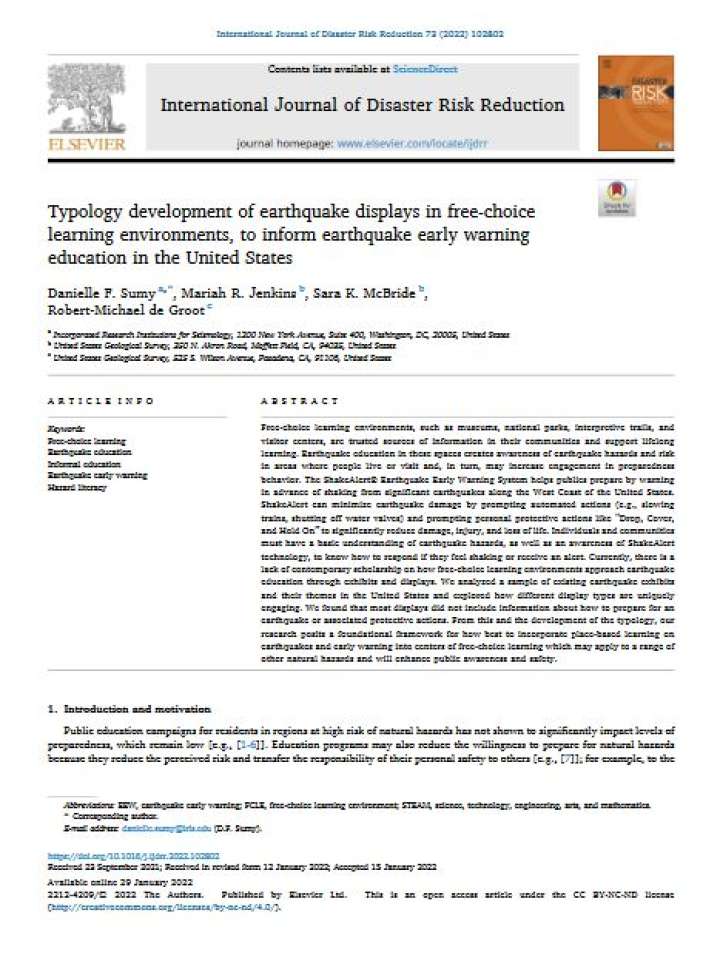Typology development of earthquake displays in free-choice learning environments, to inform earthquake early warning education in the United States
In this study, the authors analyzed a sample of existing earthquake exhibits and their themes in the United States and explored how different display types are uniquely engaging. Free-choice learning environments, such as museums, national parks, interpretive trails, and visitor centers, are trusted sources of information in their communities and support lifelong learning. Earthquake education in these spaces creates awareness of earthquake hazards and risk in areas where people live or visit and, in turn, may increase engagement in preparedness behavior.
The researchers found that most displays did not include information about how to prepare for an earthquake or associated protective actions. From this and the development of the typology, their research posits a foundational framework for how best to incorporate place-based learning on earthquakes and early warning into centers of free-choice learning which may apply to a range of other natural hazards and will enhance public awareness and safety.
Explore further

